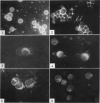Abstract
The distribution of a lymphoid-specific antigen has been studied by immunofluorescence in the thymus and other lymphoid organs of the rat and in the thymuses of other vertebrate species. It was demonstrable in all rat lymphocytes except those of the bone marrow. The thymic lymphocytes of all warm-blooded vertebrates also reacted with the lymphoid-specific serum. Plasma cells in antigenically stimulated lymph nodes did not seem to possess the antigen but similar cells appearing in lymph nodes of rats which had been irradiated and injected with marrow cells of the same strain showed a strong reaction with the antiserum. The antigen is depleted in human and murine leukaemic lymphocytes. X-irradiation did not appear to affect the antigen significantly in cells surviving the treatment.
Full text
PDF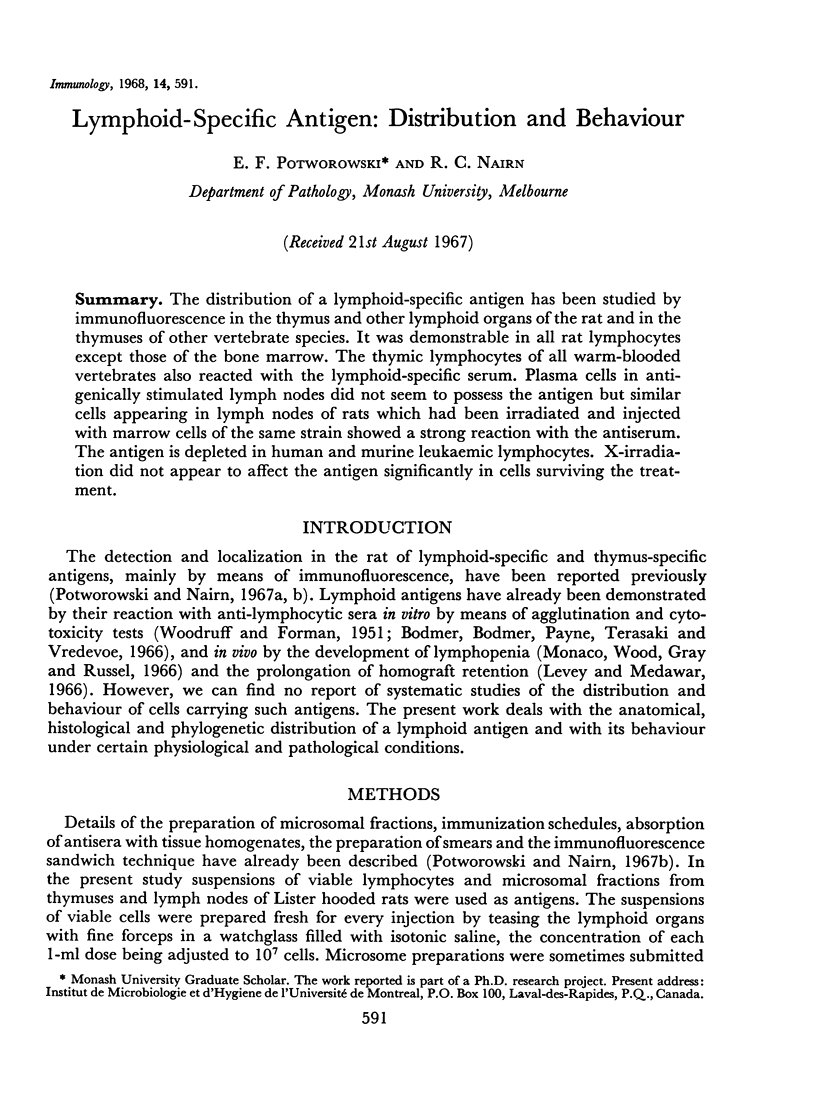
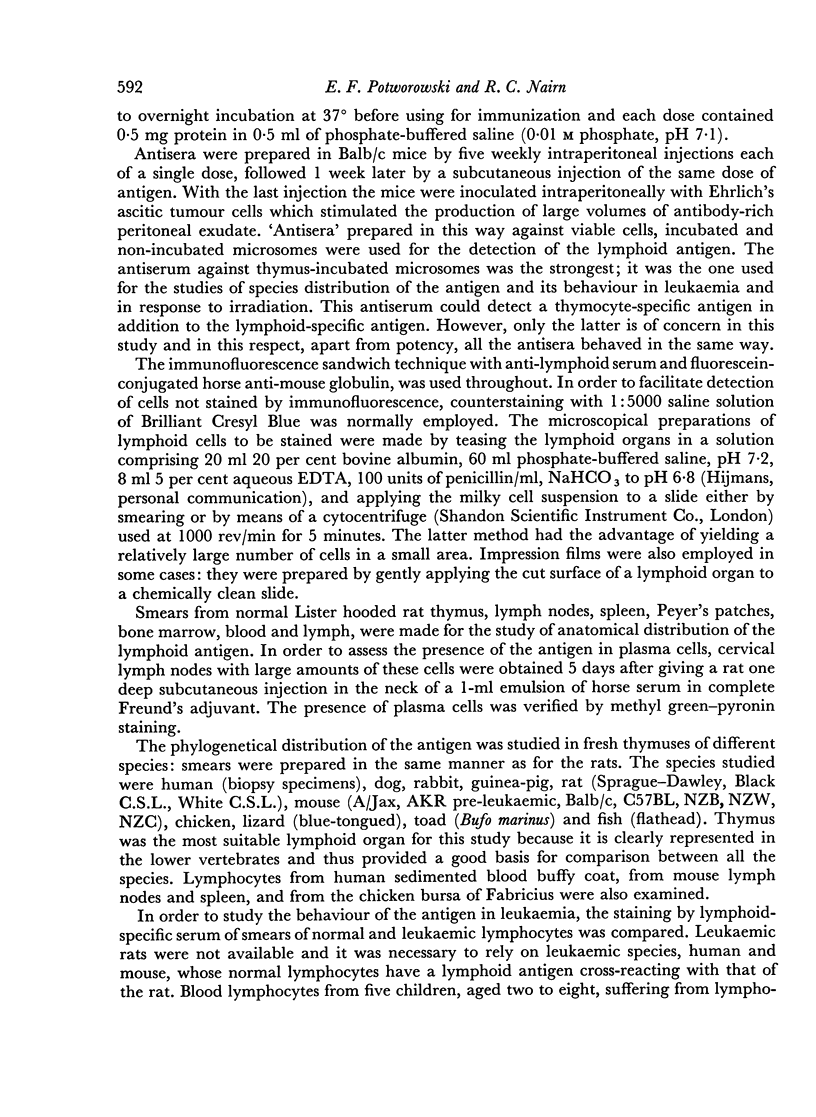
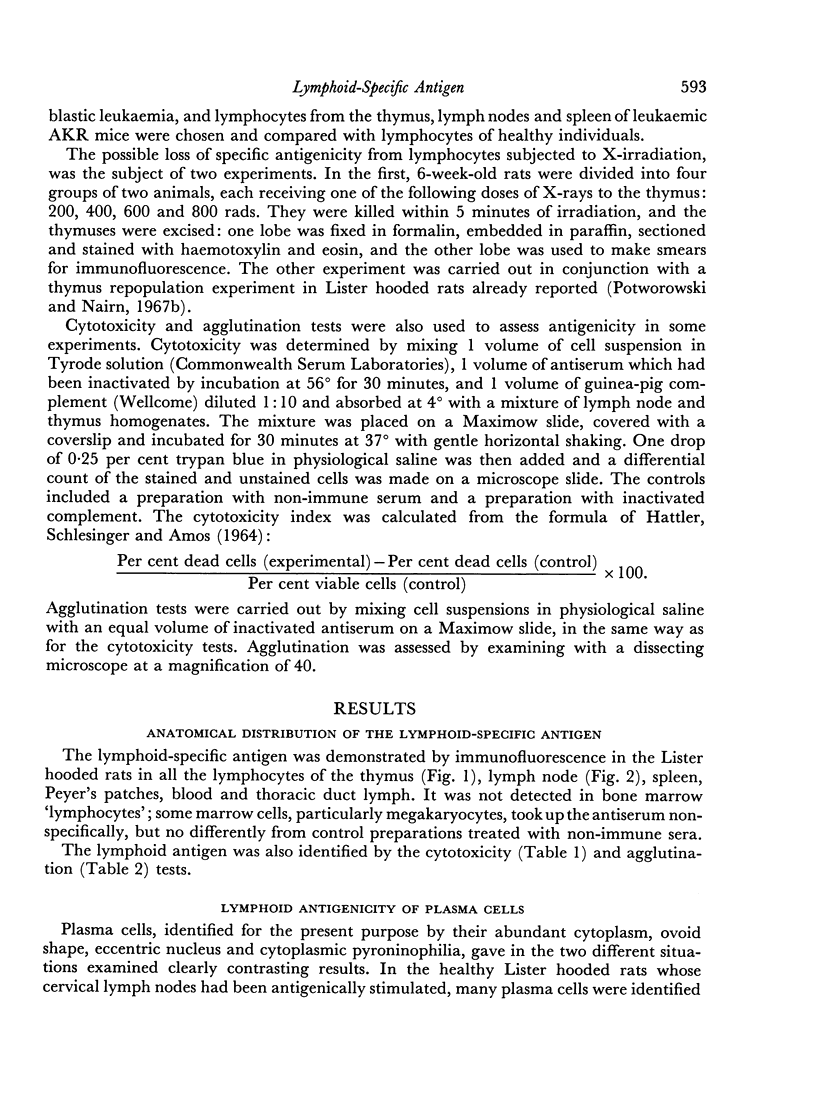
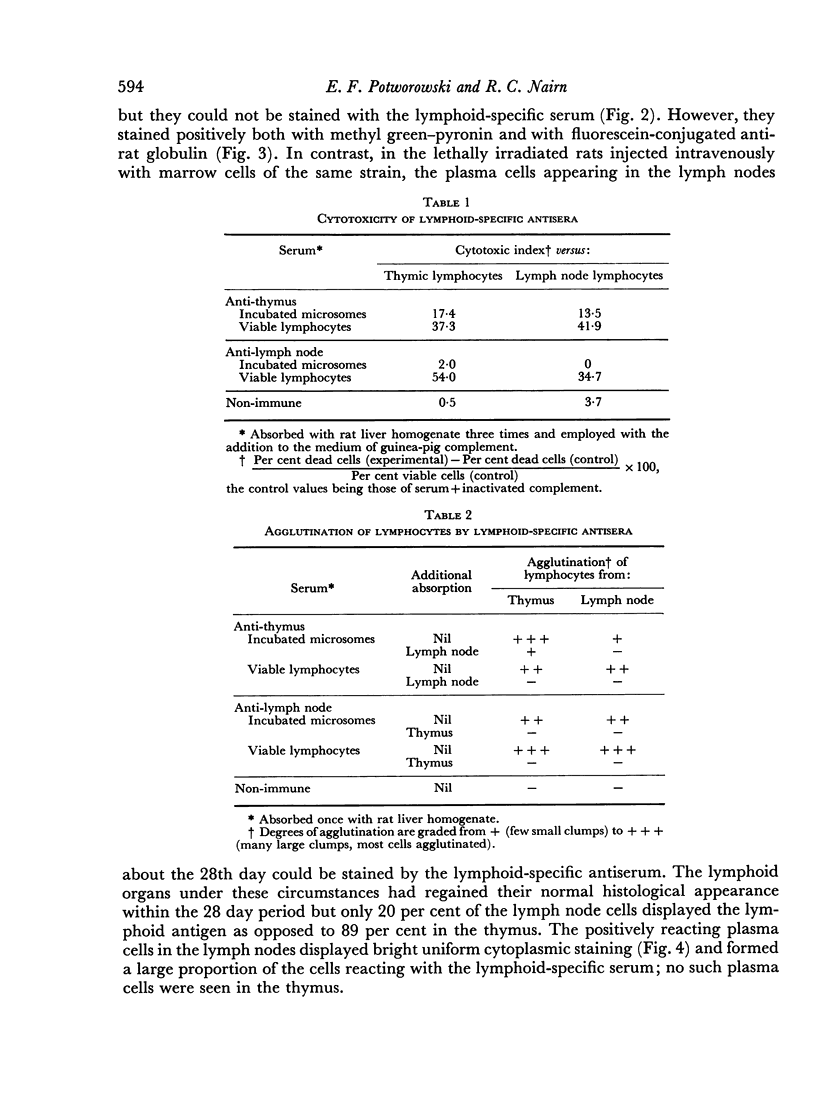
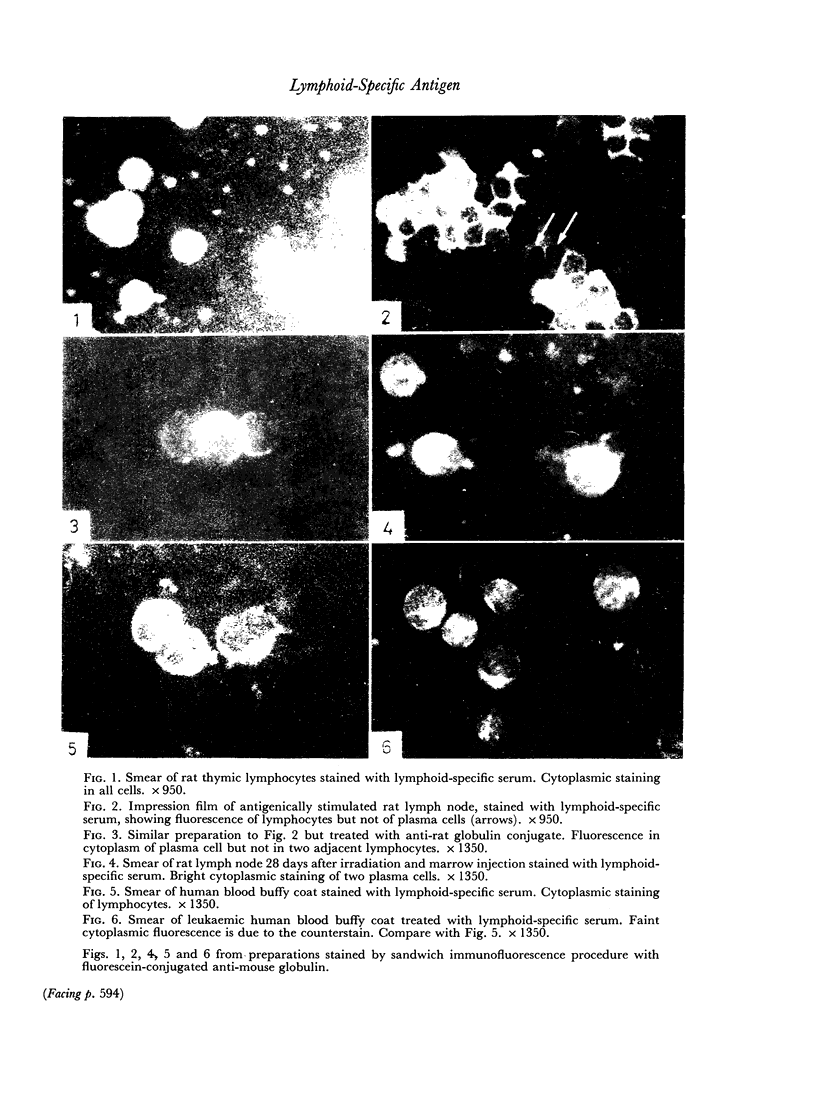
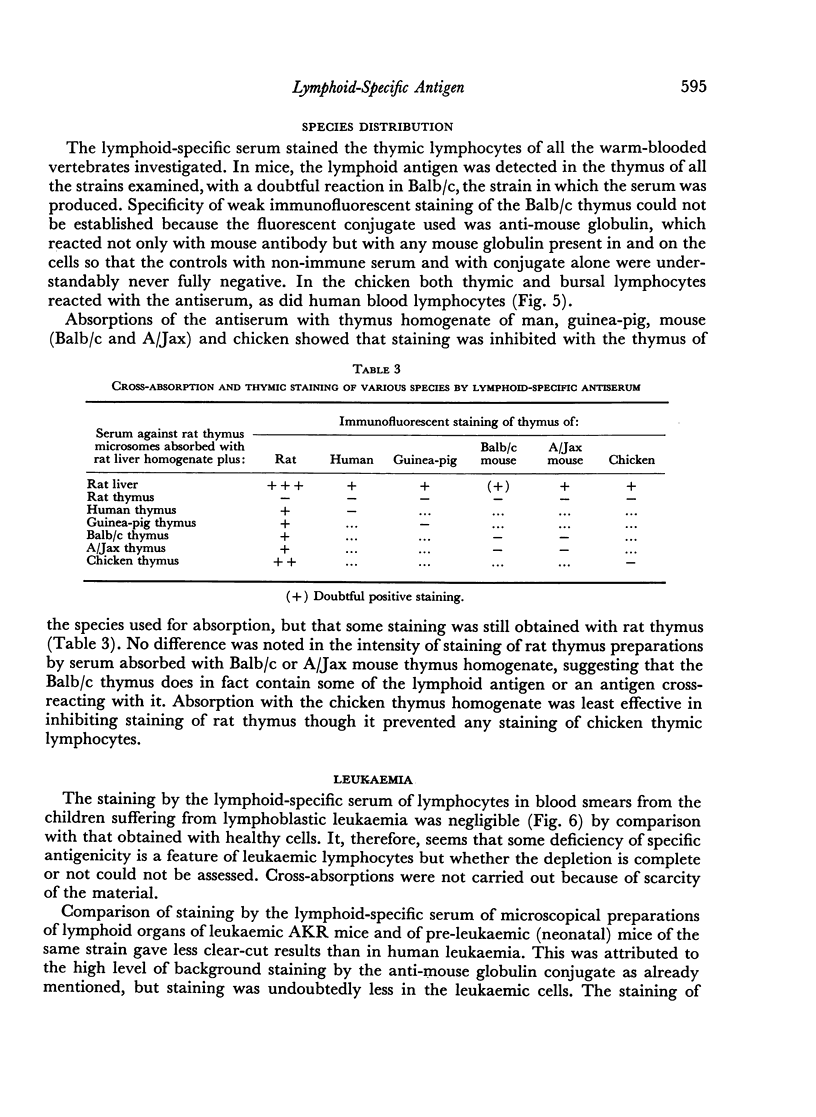
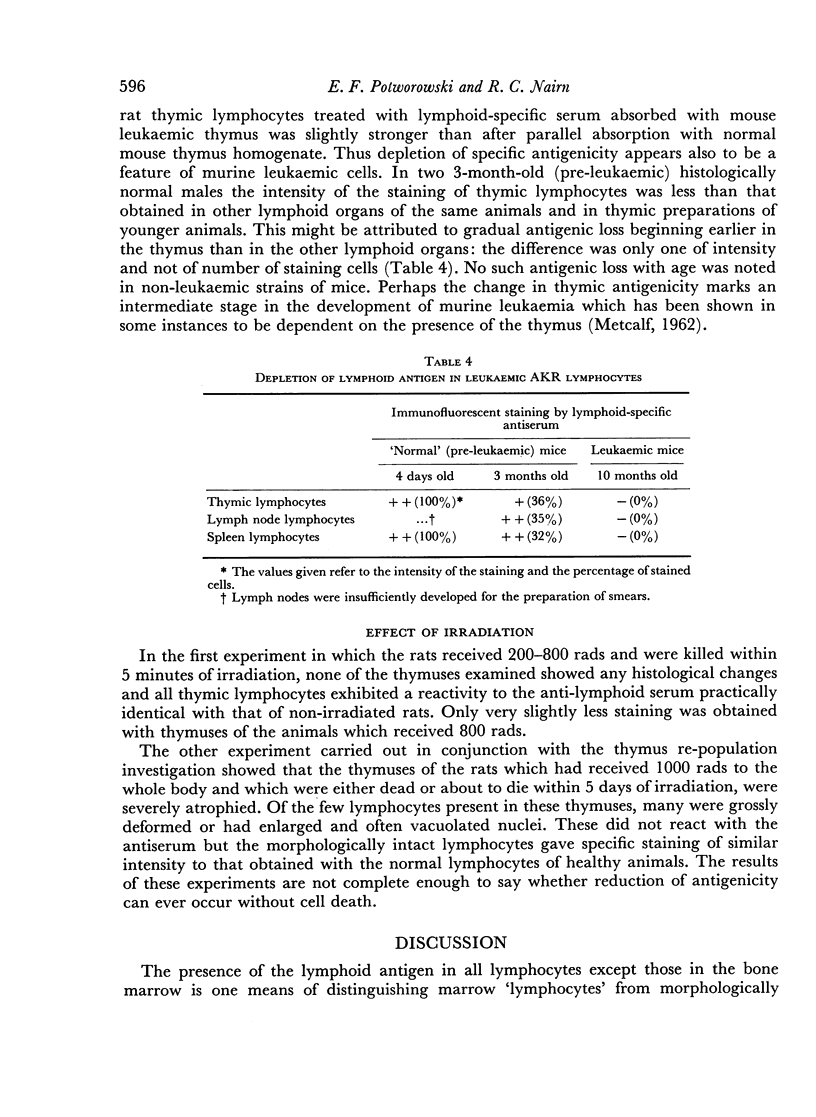
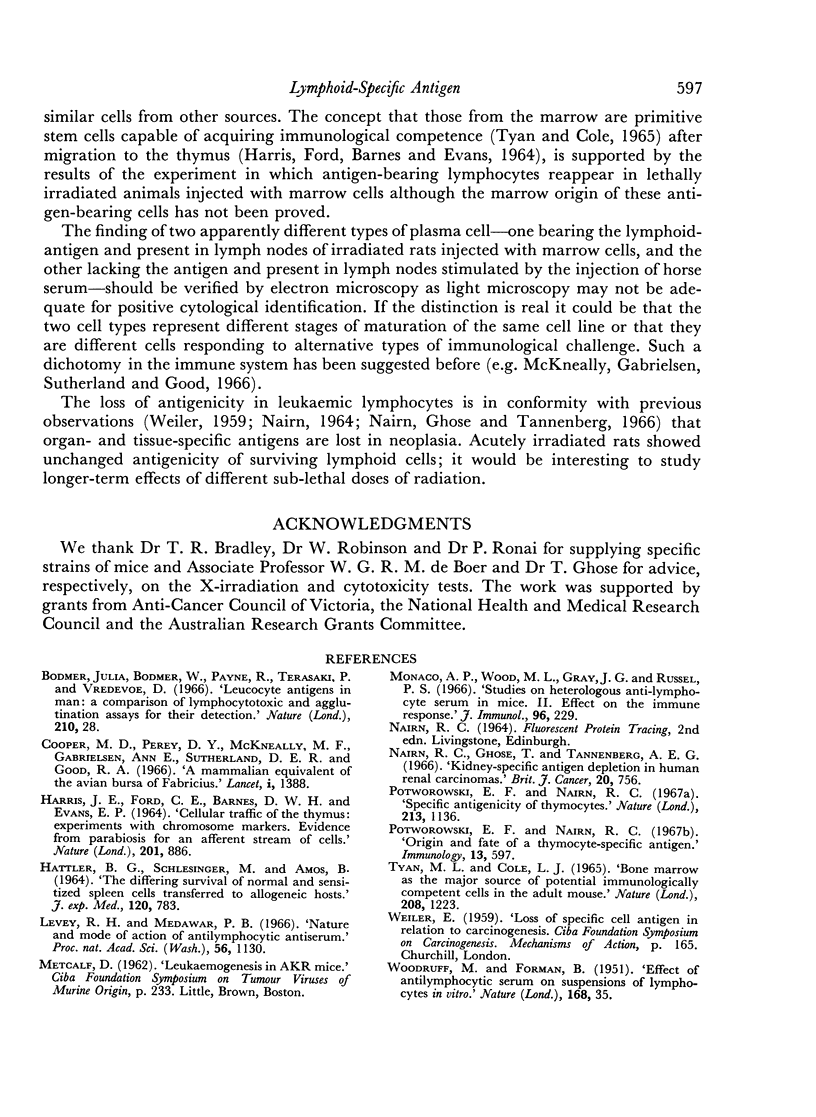
Images in this article
Selected References
These references are in PubMed. This may not be the complete list of references from this article.
- Cooper M. D., Perey D. Y., McKneally M. F., Gabrielsen A. E., Sutherland D. E., Good R. A. A mammalian equivalent of the avian bursa of Fabricius. Lancet. 1966 Jun 25;1(7452):1388–1391. doi: 10.1016/s0140-6736(66)90300-x. [DOI] [PubMed] [Google Scholar]
- HARRIS J. E., FORD C. E., BARNES D. W., EVANS E. P. EVIDENCE FROM PARABIOSIS FOR AN AFFERENT STREAM OF CELLS. Nature. 1964 Feb 29;201:886–887. doi: 10.1038/201886a0. [DOI] [PubMed] [Google Scholar]
- HATTLER B. G., Jr, SCHLESINGER M., AMOS D. B. THE DIFFERING SURVIVAL OF NORMAL AND SENSITIZED SPLEEN CELLS TRANSFERRED TO ALLOGENEIC HOSTS. J Exp Med. 1964 Nov 1;120:783–793. doi: 10.1084/jem.120.5.783. [DOI] [PMC free article] [PubMed] [Google Scholar]
- Levey R. H., Medawar P. B. Nature and mode of action of antilymphocytic antiserum. Proc Natl Acad Sci U S A. 1966 Oct;56(4):1130–1137. doi: 10.1073/pnas.56.4.1130. [DOI] [PMC free article] [PubMed] [Google Scholar]
- Monaco A. P., Wood M. L., Gray J. G., Russell P. S. Studies on heterologous anti-lymphocyte serum in mice. II. Effect on the immune response. J Immunol. 1966 Feb;96(2):229–238. [PubMed] [Google Scholar]
- Nairn R. C., Ghose T., Tannenberg A. E. Kidney-specific antigen depletion in human renal carcinomas. Br J Cancer. 1966 Dec;20(4):756–759. doi: 10.1038/bjc.1966.87. [DOI] [PMC free article] [PubMed] [Google Scholar]
- Potworowski E. F., Nairn R. C. Origin and fate of a thymocyte-specific antigen. Immunology. 1967 Dec;13(6):597–602. [PMC free article] [PubMed] [Google Scholar]
- Potworowski E. F., Nairn R. C. Specific antigenicity of thymocytes. Nature. 1967 Mar 18;213(5081):1135–1136. doi: 10.1038/2131135b0. [DOI] [PubMed] [Google Scholar]
- Tyan M. L., Cole L. J. Bone marrow as the major source of potential immunologically competent cells in the adult mouse. Nature. 1965 Dec 18;208(5016):1223–1224. doi: 10.1038/2081223a0. [DOI] [PubMed] [Google Scholar]
- WOODRUFF M., FORMAN B. Effect of antilymphocytic serum on suspensions of lymphocytes in vitro. Nature. 1951 Jul 7;168(4262):35–36. doi: 10.1038/168035a0. [DOI] [PubMed] [Google Scholar]



